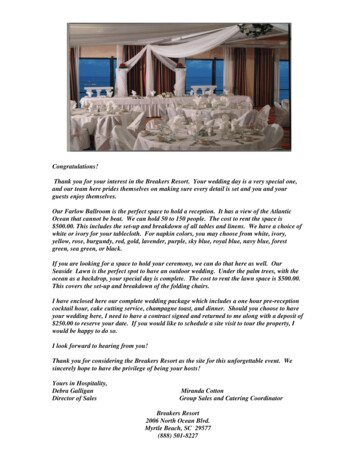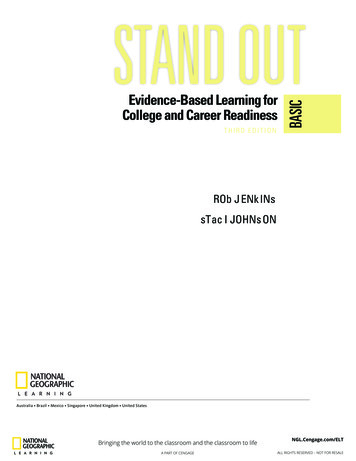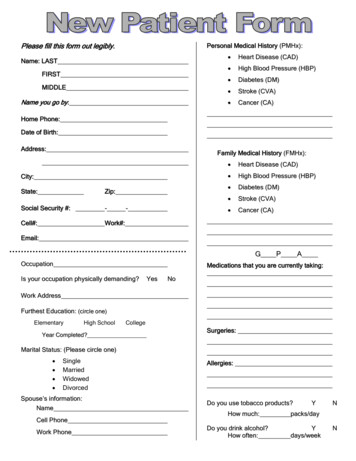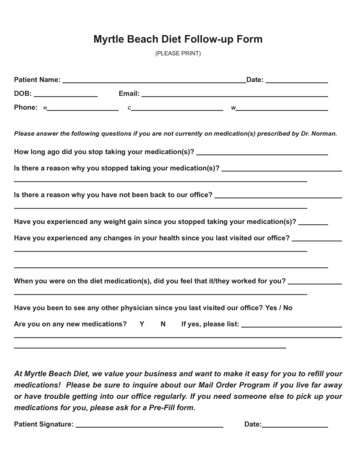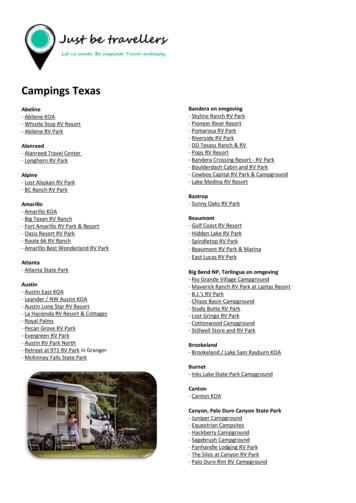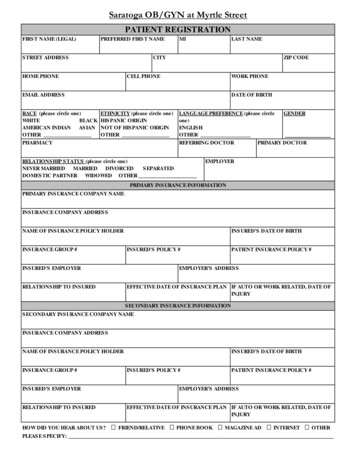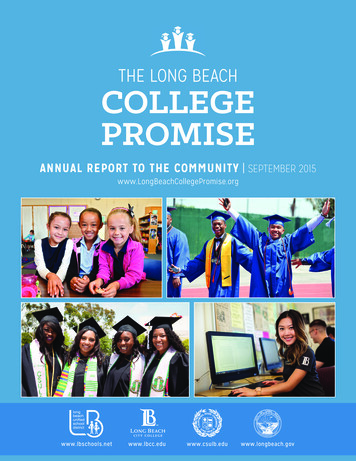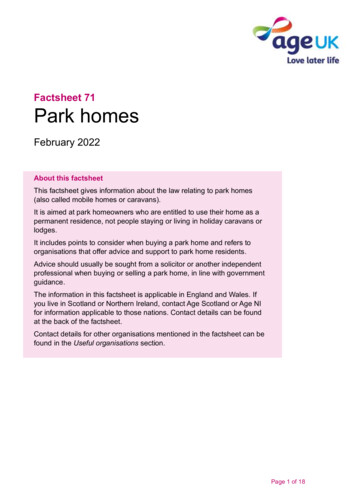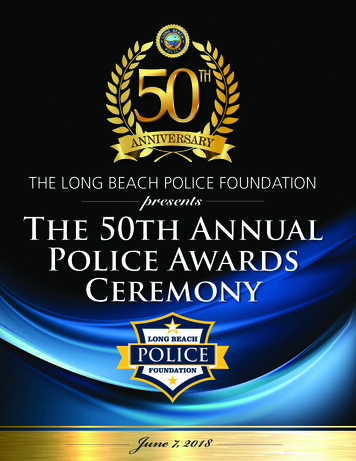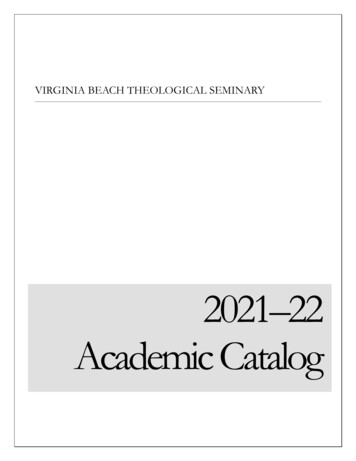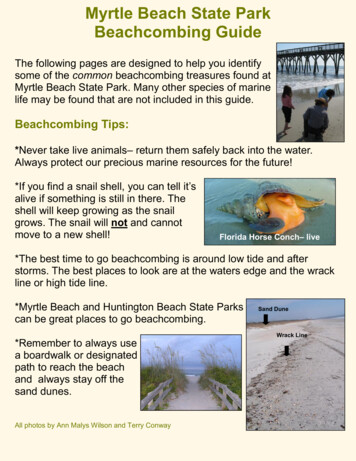
Transcription
Myrtle Beach State ParkBeachcombing GuideThe following pages are designed to help you identifysome of the common beachcombing treasures found atMyrtle Beach State Park. Many other species of marinelife may be found that are not included in this guide.Beachcombing Tips:*Never take live animals– return them safely back into the water.Always protect our precious marine resources for the future!*If you find a snail shell, you can tell it’salive if something is still in there. Theshell will keep growing as the snailgrows. The snail will not and cannotmove to a new shell!Florida Horse Conch– live*The best time to go beachcombing is around low tide and afterstorms. The best places to look are at the waters edge and the wrackline or high tide line.*Myrtle Beach and Huntington Beach State Parkscan be great places to go beachcombing.*Remember to always usea boardwalk or designatedpath to reach the beachand always stay off thesand dunes.All photos by Ann Malys Wilson and Terry ConwaySand DuneWrack Line
Bivalves– “two shells”Ponderous Ark– Noetia ponderosaEastern OysterCrassostrea virginicaCommon Jingle– Anomia simplexCross-barred Venus ClamChione cancellataAtlantic Wing OysterPteria colymbusShells can be divided into two main groups:Atlantic Jackknife/Razor ClamEnsis directusBivalves & Gastropods (Univalves)Bivalves, such as oysters and clams, havetwo shell sections connected by a hinge. Whenthe bivalves die, the two shells usually breakapart from each other.Gastropods, such as whelks and moonsnails, have a single shell that usually grows in aspiral.Myrtle Beach State Park
Bivalves– “two shells”Sawtooth Penshell– Atrina serrataStiff Penshell– Atrina rigida (right photo)Calico ScallopArgopecten gibbusCockle Shellsdifferent speciesMussels– different speciesNorthern QuahogMercenaria mercenariaLive Coquina Clams:All live shells should always bereturned to the ocean. Helpprotect our preciousocean resources!Coquina Clams– Donax variabilisMyrtle Beach State Park
Gastropods– “stomach foot”Atlantic AugerTerebra dislocataThis is a picture of a liveauger. Always release liveshells!Atlantic Slipper SnailCrepidula fornicataLettered OliveSC State SeashellOliva sayanaMyrtle Beach State ParkBaby’s EarSinum perspectivumSand Collarmoon snail egg caseAtlantic Moon Snail– Neverita duplicataThe small hole was drilled by another moonsnail. They do this when capturing theirprey. Look for a single perfect hole made bya moon snail in other shells.Banded TulipFasciolaria hunteria
Gastropods– “stomach foot”Cayenne Keyhole Limpet- Diodora cayenensisFlorida Horse ConchPleuroploca giganteaThis is not a true conch!Channeled WhelkBusycon canaliculataWhelk Egg CaseLive whelks (rightpicture) cannotsurvive longperiods of timeout of the ocean.Please return anylive shells backOpeningon rightKnobbed Whelk– Busycon caricaOperculum– this is attachedto the whelks footOpening on leftLightning Whelk– Busycon sinistrumMyrtle Beach State Park
Other Common Beachcombing FindsBarnacles and Musselson Pier PilingsHorseshoe CrabLimulus polyphemusCoralMyrtle BeachState ParkSea Whips (Soft Coral)Leptogorgia virgulataMole CrabEmerita talpoidaGhost Crab– Ocypode quadrataThis crab lives in burrows alongthe beach. Please do not disturbtheir burrow!Harmless JellyfishCannonball Jelly– Stomolophus meleagrisSpider Crab– Libinia spp.
Other Common Beachcombing FindsParchment Tube Worm (dead)Chaetopterus variopedatusPurple Sea Urchin (live)Arbacia punctulataSponge (dead)Sponge (live)Codium- Codium sppGreen AlgaeSea Pork (dead)Sargasso SeaweedSargassum sppSerpulid Tube Worms on a deadKeyhole Urchin (Mellita quinquiesperforata)Myrtle Beach State Park
Myrtle Beach State Park Beachcombing Guide The following pages are designed to help you identify some of the common beachcombing treasures found at Myrtle Beach State Park. Many other species of marine life may be found that are not included in this guide. Beachcombing Tips: *Never take live animals- return them safely back into the water.
